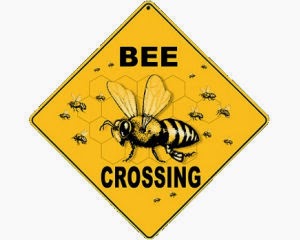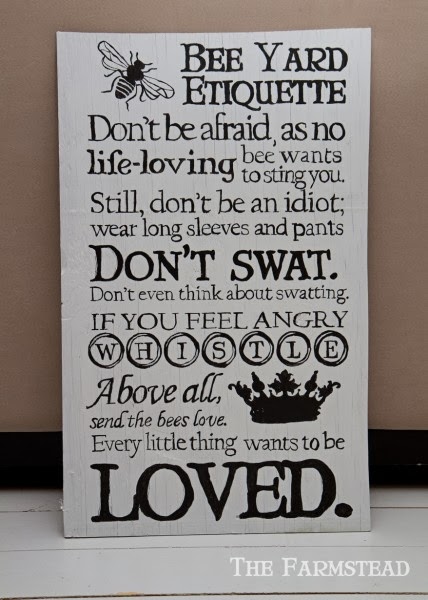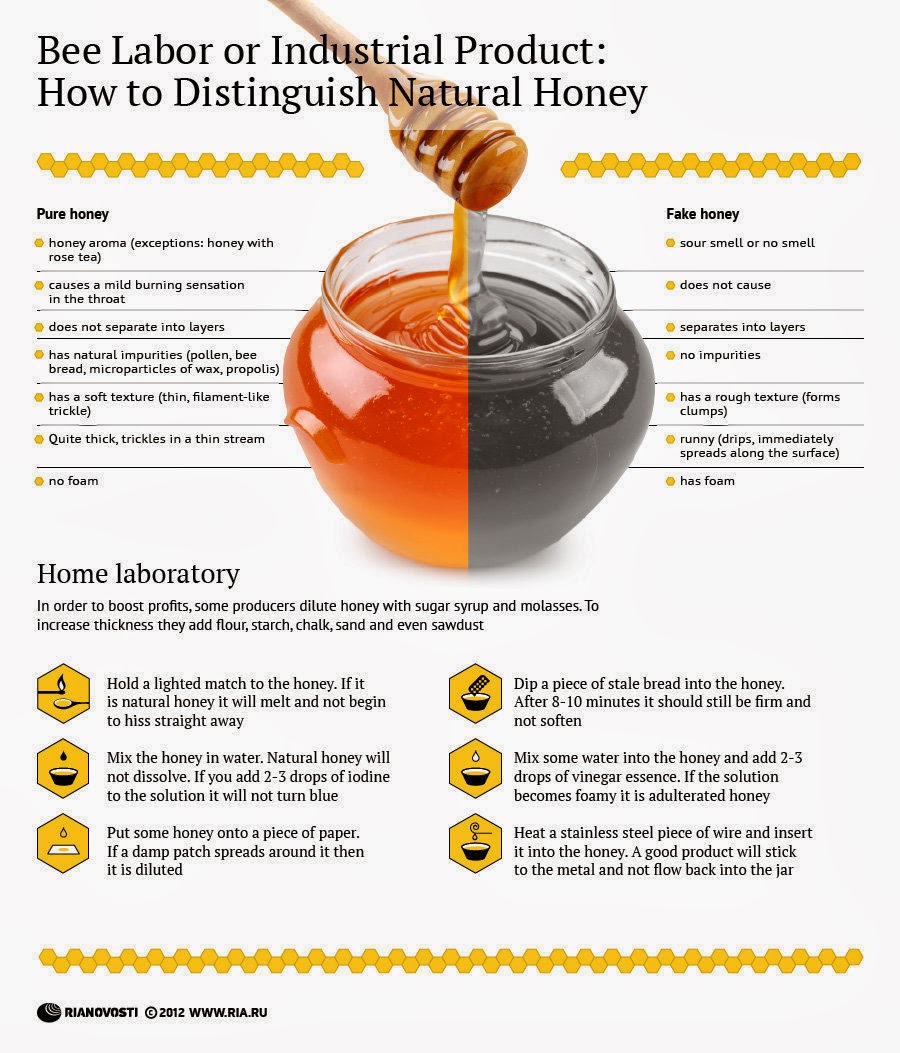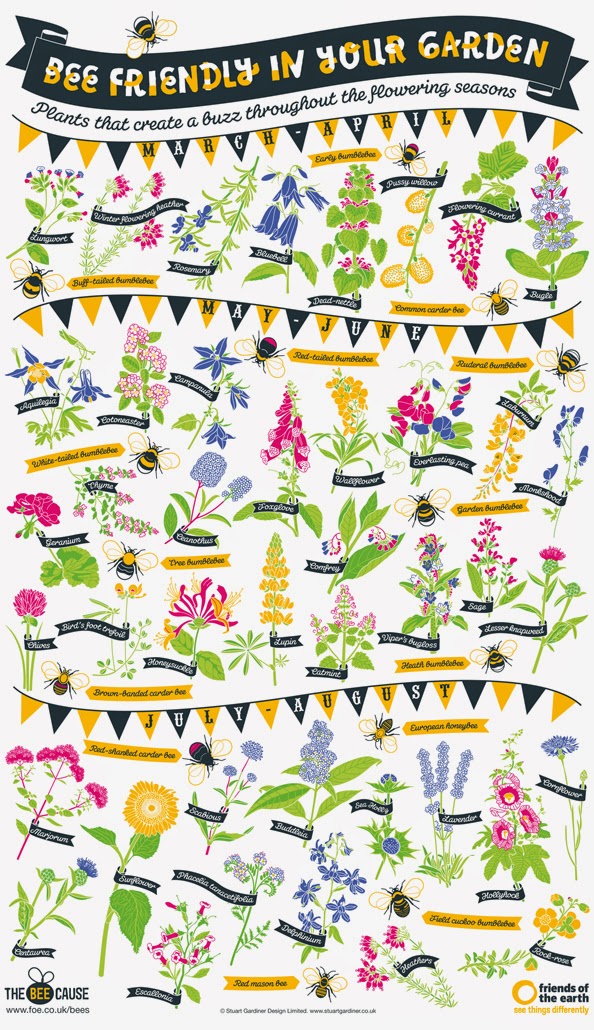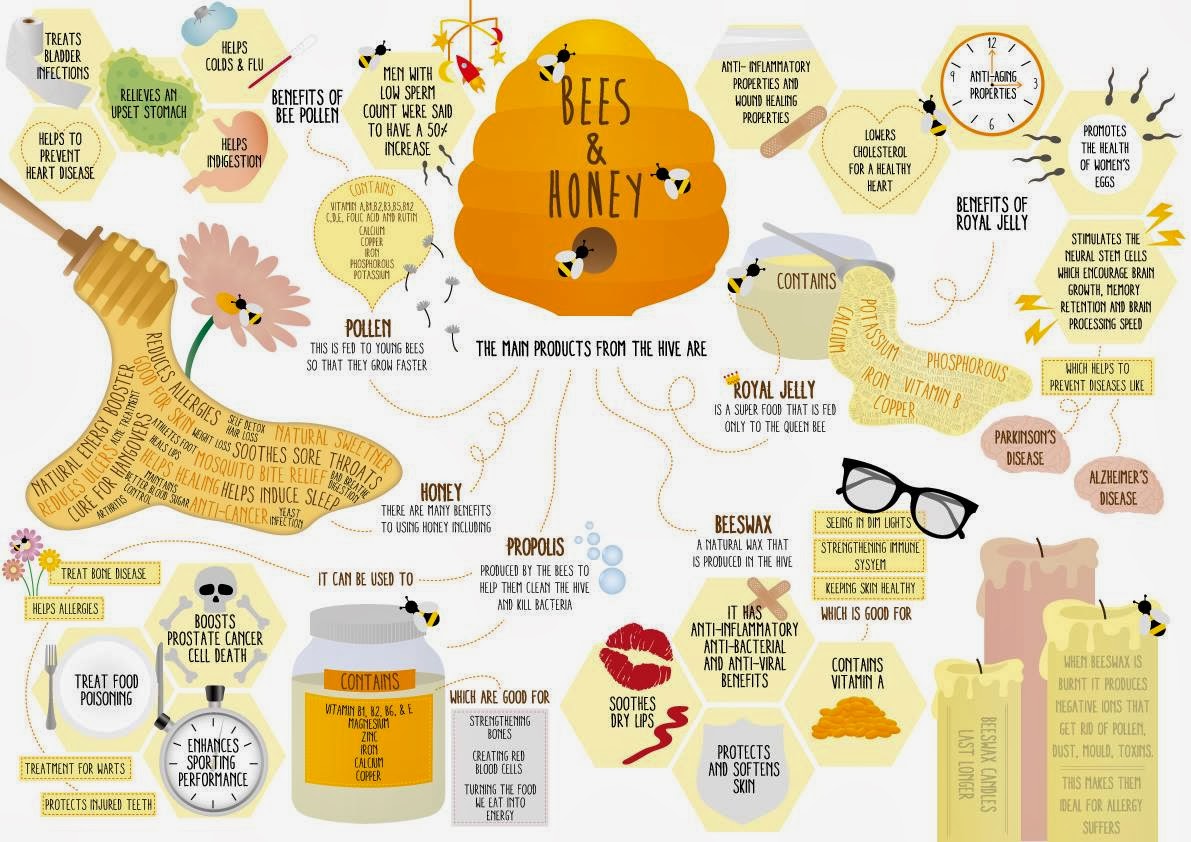Beekeeper UK
Sunday, June 19, 2016
Saturday, March 29, 2014
Start of the New Year
Saturday, March 08, 2014
Beekeeping Signs
I have seen a lot of Beekeeping signs and made a few myself, especially for when I am catching a swarm in a public area as people do let their curiosity overwhelm then sense sometimes. First up, Beekeeper Parking sign, speaks for itself.
Also from Rossman Apiaries in the US is this one, How Fast Can You Run?, I have called it. I think that these signs will always have more impact on casual readers when there is a little bit of humour and a little bit of drama in them.
Next up, I really like this Warning - Africanised Bees sign from the USA. Not the kind of thing you are likely to see in the New Forest where I live, I am pleased to say, but good advice on here! As ever, as bees, they are attracted to fast movement and if you run, they will chase - if you walk slowly and calmly, they will probably leave you alone.
The next one is not so much a warning as a request - No Spraying Please! - it would be good to think that your neighbours would consider your apiary if they knew it was there. I always worry about putting signs up like this that advertise specifically where your apiary is located, due to hive-thieves, though. It's a difficult balance.
One from the UK! Nicely done, this clear and largely graphical sign just gives passers-by the idea that approaching those lovely looking bee hives might not be the best idea for them or the bees.
Hats off to the authorities in Australia for producing this sign for local beekeepers to use in and near their apiaries to promote and improve apiary hygiene and Honey Bee Biosecurity. Some great info on their site too, check it out.
This would be an incomplete collection without a Bee Crossing sign, so here you go.
My favourite of all is this one, and it is free (or at least the instructions on how to make your own) from the Farmstead, the Bee Yard Etiquette. I plan to build myself a beekeeping shed next year and when I do, I shall make one of these to hang in it. Beautiful, funny and practical.
...please do comment with a link to any others you have seen and would like to share with me. Thanks.
Sunday, February 16, 2014
Beekeeping Infographics
There are some great infographics related to beekeeping out on the net. I have picked my favourites for you to enjoy, add a comment if you know of any others worth adding here... so in no particular order, here are my ten favourites...
First up, this nice guide to how to tell if your honey is natural or if it has been tampered with. Although these are very much household tests and not going to give you a 100% scientifically conclusive result, it will give you some tell-tale signs if you have been a victim of honey laundering. Best way to avoid honey laundering though is to buy your honey from a local beekeeper - you will get all the benefits of having 100% locally produced honey with no additives.
First up, this nice guide to how to tell if your honey is natural or if it has been tampered with. Although these are very much household tests and not going to give you a 100% scientifically conclusive result, it will give you some tell-tale signs if you have been a victim of honey laundering. Best way to avoid honey laundering though is to buy your honey from a local beekeeper - you will get all the benefits of having 100% locally produced honey with no additives.
Next up, this
very colourful guide to the plants you can grow in your garden that are
bee-friendly - for all bees, of course, not just honey bees. It's really
nicely done and a great effort from Friends of the Earth.
More if an illustration than an infographic, but worth including as it is a wonderfully simple introduction to how Top Bar hives work.
More if an illustration than an infographic, but worth including as it is a wonderfully simple introduction to how Top Bar hives work.
Another colourful effort, this infographic is showing how the honey bee waggle dance works. Great fun and it shows the basics of this fascinating behavior.
Serious stuff now, this infographic tried to explain some of the potential reasons for the decline of the honey bee population. From the USA, so the stats reflect US units, but still extremely relevant worldwide and nicely presented.
An infographic for beekeepers, this next effort shows the life-cycle of a honey bee colony, showing brood development in a really nice graphical format.
Another big one, an educational beekeeping infographic here from Hobby Farms that shows the lifecycle of bees, the jobs they do in the hive and many other facts and figures about the hive and honey.
There are even more out there too, like this Bees and Honey infographic, which is worth a look. Some great illustrations of the uses of honey.
And which beekeeper has not been asked the difference between bees and wasps? This infographic illustrates many of the differences in full colour.
Finally, another covering some of the theories about honey bees and their potential extinction. Really nice graphics in this American infographic and very professional looking.
So that is ten, but I found another worth adding; so here is another!
That's my top ten, well, eleven as it turns out. Comment with a link if you know of other good ones...
Serious stuff now, this infographic tried to explain some of the potential reasons for the decline of the honey bee population. From the USA, so the stats reflect US units, but still extremely relevant worldwide and nicely presented.
An infographic for beekeepers, this next effort shows the life-cycle of a honey bee colony, showing brood development in a really nice graphical format.
Another big one, an educational beekeeping infographic here from Hobby Farms that shows the lifecycle of bees, the jobs they do in the hive and many other facts and figures about the hive and honey.
There are even more out there too, like this Bees and Honey infographic, which is worth a look. Some great illustrations of the uses of honey.
And which beekeeper has not been asked the difference between bees and wasps? This infographic illustrates many of the differences in full colour.
Finally, another covering some of the theories about honey bees and their potential extinction. Really nice graphics in this American infographic and very professional looking.
So that is ten, but I found another worth adding; so here is another!
That's my top ten, well, eleven as it turns out. Comment with a link if you know of other good ones...
Thursday, January 02, 2014
Happy New Year, Bees!
It's the start of a new year and it is pretty stormy here in the South of England. I wandered down to my apiary this morning to make sure the hives were still standing and I am pleased to report they were all standing and they had bees flying around all over the place. I realised that it was quite warm and the sun was out too, so the bees were taking advantage of this mild and dry spell in the weather to get out and stretch their wings. I dashed down to the shed to get my suit on and grabbed some fondant as this was an opportunity to get into the hives, check they are doing ok and give them some feed if they need it - all without disturbing them as much you would expect to do so at this time of year and they would usually be clustered together for warmth. Well, it was mainly very good news - all the British National hives were really healthy, strong in volume and stores were still plentiful. One of the Top Bar hives was fine, but I had a smaller and weaker colony in the other Top Bar hive which has expired - I kinda expected that to happen, but hoped they would make it. But generally this is good and great to see that the stores are still well stocked for the colonies still in action. I might have to make do with hefting the hives from now on though, as there is more bad weather on the way... and if you missed the UK Honey Show this year, then some of the lectures are on YouTube - worth a look if you have some spare time.
Monday, October 28, 2013
Bee Forage and Navigation
We had a visit from Pam Hunter at our local association meeting last month. Pam is a biologist and Master Beekeeper from Sussex, and she gave us a presentation on Honey Bee forage and navigation. She kindly agreed to let me record her talk so you can enjoy it too, so here it is. Download and enjoy.
Friday, October 18, 2013
Podcasting Interview
I was lucky enough to be interviewed by Gary at Kiwimana Buzz a couple of months ago and that interview has just been released on their podcast and website. Have a listen and see what you think! They have a great back catalogue of podcasts with hours and hours of great beekeeping interviews and information, so it is well worth downloading their podcasts to your mobile device and listening to them. I have been playing with the idea of doing my own podcast, but that is still in the planning stages, so watch this space.
Saturday, October 05, 2013
Beekeeping Christmas Gifts
It is the time of year again where we start trying to think of what original presents we could be buying for Christmas. If you plan to buy presents for a beekeeper or can't think of what to ask for yourself, here are some ideas to consider.
Books are always welcome in the Winter months when beekeeping is less frantic than it is in the Summer. There are so many books to choose from though and you should have a good look through to see if any suit your current needs. There are two I have gone for this year, one is a Beekeeping book and the other is a Honey book.
The Little Book of Honey by Elizabeth Gowing really is a little book, so don't be surprised when it arrives. It is a charming book though, not just full of lots of original ways to use your honey, but lots of stories about the authors travels in places all over the world, the honey she found there and stories behind how that honey is produced and used in those locations. It would make a great stocking filler and would suit beekeepers, but also cooks are sure to be interested in this fascinating book. Check out her own site for more details about her work and other books too; you can buy the book direct from her for about £7.
Burt's Bees cosmetics are good quality and are great for the beekeeping theme. The gift sets are great if you have not used them before, but you get to know which ones you like best; one of my favorites is the coconut foot creme which is £12.99. Take a look at the website for Burt's Bees, there is something for everyone.
On the subject of chilli, this Honey Habenero BBQ sauce is a great product in cool packaging and would suit the beekeeper that likes to BBQ. Superb on steaks or my favourite, pork ribs. This is a hot chilli and honey BBQ sauce and although it is £9.99 at FireBox, it is a real treat.
Another good stocking filler would be an uncapping fork which you can get at most beekeeping suppliers, but here is a link to Becky's Bees who sell them for £5. My friend Ted, who is the education secretary at our local beekeeping association, recommended these to me this year and I got on really well with them.
Finally, a great fallback gift for the beekeeper - gloves. Thornes sell a great range, although I like the goat skin ones shown at this link. Gloves get dirty so easily over the year and it really is a treat to have a fresh pair at the start of the season, free from any disease or propolis, they're not sticky either, it feels great to have a new pair. And even if your beekeeper has enough gloves, they can be stored and used in the future. Just make sure you get the right size! There is a guide to sizing on their site, so check that if you are not sure.
Friday, August 23, 2013
Planning for Winter
Although the bees are still foraging and brood are still being laid, preparations for winter need to be thought about as early as possible, so I am trying to get ready for what might be another very cold and wet winter that could keep my bees hive-bound for 6 months or more.
The first and most obvious consideration is whether each colony has enough feed to take it through winter. How much feed they need depends on how cold your winters are, how long they go on for, when forage ends and when it might begin again, how many bees are in the colony, what kind of micro-climate your apiary is in, how healthy they are, and many other factors. There is, like so many things in beekeeping, no set rule. Some seasoned beekeepers have told me that a colony need to have a super full of stores to make sure they get through winter, but I have seen colonies survive on less and die with more. But I don't think it is a bad benchmark.
At the end of summer I will assess whether I think they are doing ok for stores or not. If I think they could do with some encouragement, I will feed them sugar syrup to get those stores growing faster before the colder weather hits them. As we slip into autumn I will switch to fondant if I still think they need some more help. Sometimes I have given a colony a block of fondant in autumn and they still have 90% of it in March! Other times they eat through it in a fortnight. There is a recipe for sugar fondant in one of my earlier posts if you fancy making your own.
Another consideration at this time of the season is whether you think any of your colonies are so small that they are unlikely to be able to get through winter on their own. Maybe they would have a better chance if they were mixed in with another colony? If you have two small to medium colonies, mixing them together can create one medium to large colony that will have a better chance of making it to spring. As you can see from this picture, I use the paper-separation method to mix two colonies together; I take the roof off one colony, get the colony into their brood box, cover the brood box with two sheets of paper (newspaper is good) and prick the paper generously with a pin, then put the second colony in their brood box on top of the paper and replace the roof. After a few days the bees will have chewed through the paper, but by that time they will have swapped scent with each other and will not fight, hopefully. I have done this many times and it has never failed, but as with everything, there are no guarantees.
Sunday, June 02, 2013
Swarm Season
Last weekend a swarm turned up in my garden. This happens now and again; they are attracted to the smell of the apiary. Today I was in the apiary, checking the hives, and I heard a furious buzzing behind me. I thought one of the hives I had already looked at had decided to protest. But no; as I looked over my shoulder I could see a swarm of bees come over my hedge. I got a nice shot of them; they filled the air and it was fascinating to watch them decide where they wanted to land, and then see how they settle and cluster.
Soon they came together in one of my hazel trees and fortunately at a nice shoulder height. I left them for a little while and then started to cut around them so I could get to the cluster easily. I then got my trusty swarm catching sheet under the swarm (in case I dropped them - you never know!), my cardboard box directly under the cluster and then stepped in with my secateurs and cut the branch they were holding onto - carefully holding the swarm cluster end of the branch! You can see in the video below that the branch cut cleanly and I managed to get the cluster of bees safely out of the tree without disturbing them...
Subscribe to:
Comments (Atom)
